Dr Case is a photographer and visual artist who started his creative career as a graffiti artist.
Today, we’re chatting with Dr Case about his story—the series of events that led him from the world of graffiti into calligraphy, photography and finally, into becoming a digital surgeon and creating the Symbi0sis project.
Hi Justin, can you tell us a bit about yourself—where are you from and how your upbringing has influenced your work?
I’m from Barcelona. I started writing graffiti in the 90s when I was a teenager. I didn’t use the name Justin Case back then, in those days we used short names like “Capi” or “Kool”, I chose the name “Fazy”. Graffiti and the Hip Hop movement in general has had a great influence in my work and my life, it was like the starting point for me. As a teenager I wasn’t interested in art or photography at all. I was more worried about writing my name on trains and walls. But eventually my love for tagging led me to calligraphy, and my obsession with documenting the graffiti pieces before they disappeared made me interested in photography. I would have never created a project like Symbiosis without starting in the world of graffiti, I guess they are my roots.
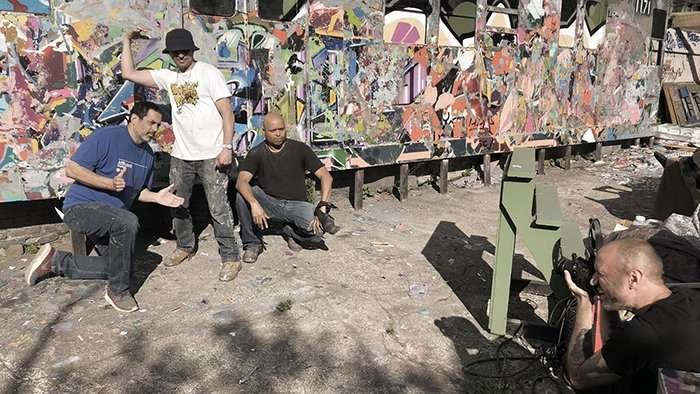
How did you first start exploring your creative talent?
I started by writing my name, like all the graffiti kids. Then I realized that having a nice style was more important for me than having my name everywhere. In the old school days there were two different visions of graffiti: the “bombers” thought the most important thing was to have your name all over town, and the “stylers” thought the most important thing was to write your name with a crazy style, quantity vs quality. I was more into the “style” philosophy. So I became really interested in calligraphy and I started practicing a lot indoors before hitting the streets.
My passion for calligraphy and a little bit of research made me realize that there were some people centuries ago with a style crazier than anything I had seen on the streets. That’s how my passion for writing my name around became love for calligraphy. I realized that writing with style and giving more importance to the beauty and harmony of the strokes than the legibility of the letters was nothing new, it had been done for hundreds of years before I was born. I guess this discovery was quite humbling for me. I became a big fan of the real old school masters from the Middle East and Asia, like Mustafa Rakim. That’s why my tag has an Arabic style even though I use the Latin alphabet.
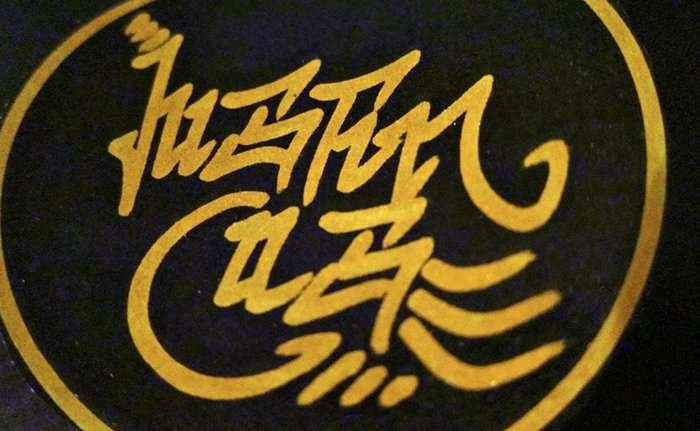
When and how did you start working with photography?
In the 90s we used to take pictures of our graffiti pieces with cheap cameras before they disappeared. You never knew how long they were going to last, they could be buffed by the cleaning squad or capped by another writer with whom you didn’t have a especially good relationship. So it was important for us to have the picture as a record, and also for graffiti fanzines.
At that time we were not really worried about the quality of the images. We used compact cameras and many times took the pictures by night right after finishing the piece. So the quality of the photos was not very good. You could not see them until the roll was finished and you took it to be developed, and it wasn’t possible to edit the pictures once they were developed.
There were no digital cameras, no Photoshop, and no Internet, everything was quite different back then. After a while I started taking pictures of my friends’ pieces too, and then pictures of my friends “in action” (painting). I thought it was interesting to document also the process of creating a piece of graffiti, not only the outcome.

While documenting the emerging street art scene, you started censoring your photographs. Why is that?
When the Internet arrived to my house, I had a collection of thousands of pictures of graffiti and street art. So I decided to open a Flickr account and share them with the world. With the pictures of the final pieces there was no problem, but when I started publishing pictures of my friends in action, some of them asked me to censor them.
Graffiti is illegal, so most artists don’t like to have their faces around the Internet. I didn’t like to pixelate them, it made my photos look like police records with criminals in them, so I started trying to find a way of hiding their faces without really censoring them. Finally, after playing with different ideas, I came up with a solution: using their own characters to replace their heads! And this is the way the Symbiosis project started…
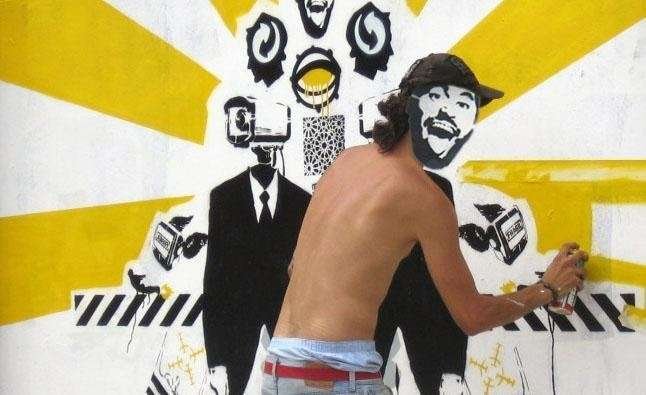
At the beginning I didn’t pay much attention to the orientation of the head or the integration of the images. It was simply a quick way of covering the faces copying and pasting the characters on top before publishing the picture, it could be done in five minutes. Then I started discovering the secrets of Photoshop and spending more time integrating the artists with their characters, taking into account things like the orientation of the head and the color of the skin.

Now you not only work with street artists and graffiti writers, but all kinds of artists; painters, graphic designers, illustrators, sculptors, tattoo artists, calligraphers, fashion designers, 3D artists, art toy makers… Where do you find your subjects?
I started with my friends, then friends of friends, until one day I realized it made no sense to constrain the project to graffiti writers and street artists. I don’t like limitations, especially the ones we put upon ourselves. So I started taking pictures of artists from different scenes, from pop surrealists to fine-art doll makers or 3D artists.
I started sending messages to people I had never met in person to ask them if they wanted to be portrayed and fused with their creations. The response of the artists was fantastic, they were really open to collaborate and many gave me great ideas for their portraits. Today with social networks it is very easy for me to contact artists from anywhere and share my work with them so they can see what I do before subjecting themselves to my experiments.

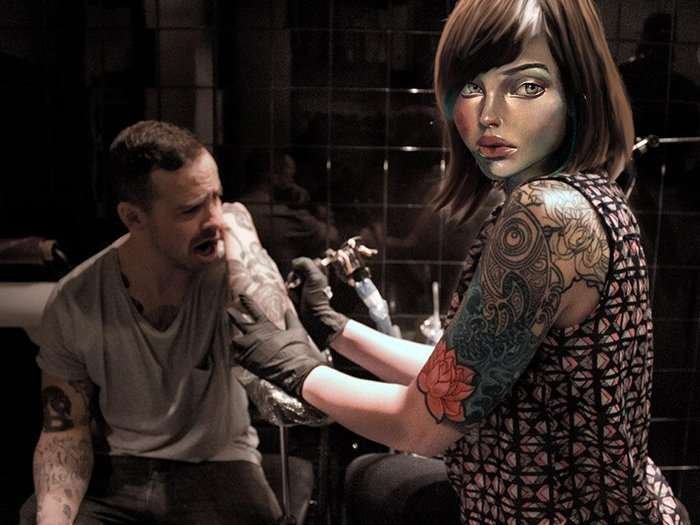



The collection of your works can be found at the Symbi0sis web. Can you tell us more about this site?
I created the Symbiosis website a long time ago to show the results of my experiments. But now I also have a Behance profile where you can see my portraits in higher resolution to enjoy all the little details. : )


There are a lot of factors to consider in the creation of your artwork—meeting new subjects and gaining their trust, logistics, technical skills with equipment and software. What do you consider the biggest obstacles during the development of your unique style?
Finding the time to work on the portraits. My photos have A LOT of post production, I actually spend more time photoshopping the pictures than taking them. The photo shoot can take around one or two hours max, but then I spend days in Photoshop making the symbiosis. I don’t make a living with my photos, I’m actually a teacher. So I would say that finding the time to create the photocompositions is my biggest obstacle. At the moment there are more than 20 artists waiting for their symbiosis to be finished! Sometimes I send the final photo to the artist one year after taking it. Some of them think I have totally forgotten about them, so when they receive it it’s a big surprise.

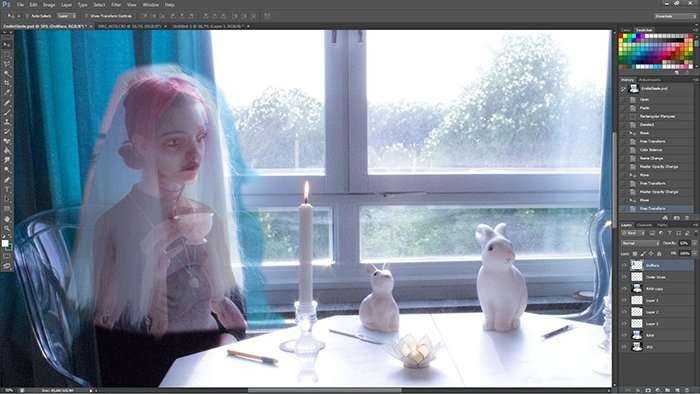
How do you promote, show and sell your work?
I promote my work online, on social networks like Instagram and artists networks like Behance. I also make gallery shows, but at the moment I don’t sell much. Anyway, selling my portraits has never been a big priority for me. I love this project and I plan to keep it going even if I don’t make money with it.


What is the main piece of advice you would give to a young aspiring artist who wants to develop their own style of art?
Make art that makes you happy. You are the one who should be satisfied with your work. Don’t create art for other people to like. If you fail, don’t give up, fail again, fail better, become a master of failure. If you keep trying, someday you may succeed. If you stop trying, you will never know if you could have made it. Art can be a long journey, don’t become obsessed with having your art in galleries or selling it, enjoy the journey, learn from it.

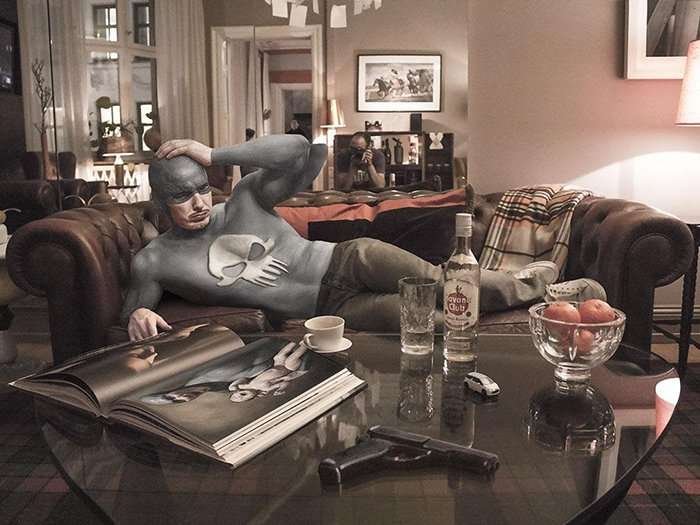
What are some of the benefits of being an artist in Barcelona?
There are many other artists to collaborate with. That’s something essential for me. : )

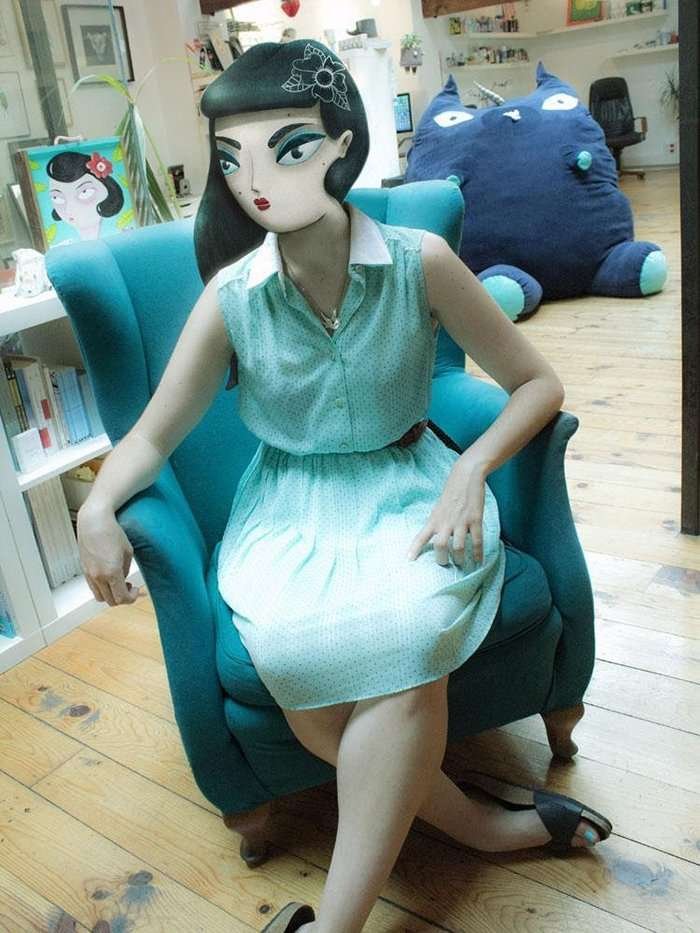

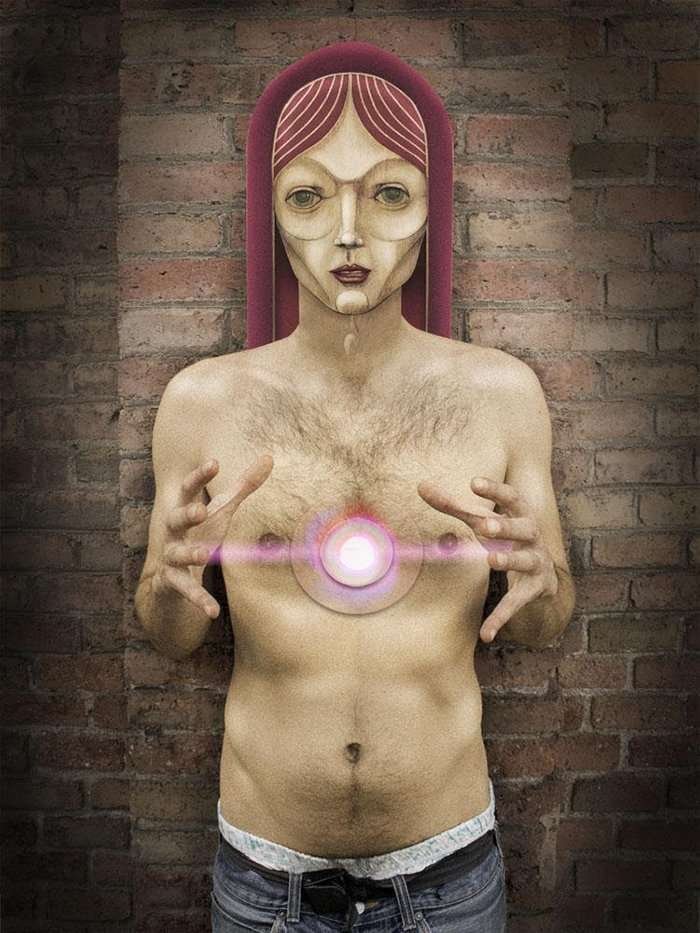

Do you have any new projects in the works?
I’m preparing a book with all the portraits I have done. If everything goes fine it should be ready next year, after finishing all the symbiosis I have pending and saving some money to print it…
Thanks for taking the time to share your journey with us Justin! We look forward to seeing all the new pieces that are in the works!


Thanks for your interest in art & creativity on FrikiFish— a one-woman labor of love, providing free content and services to artists, art-lovers and creative projects in-and-around Barcelona. This project runs on caffeine and community love, please consider supporting with a donation or a cup of coffee. Thank you!